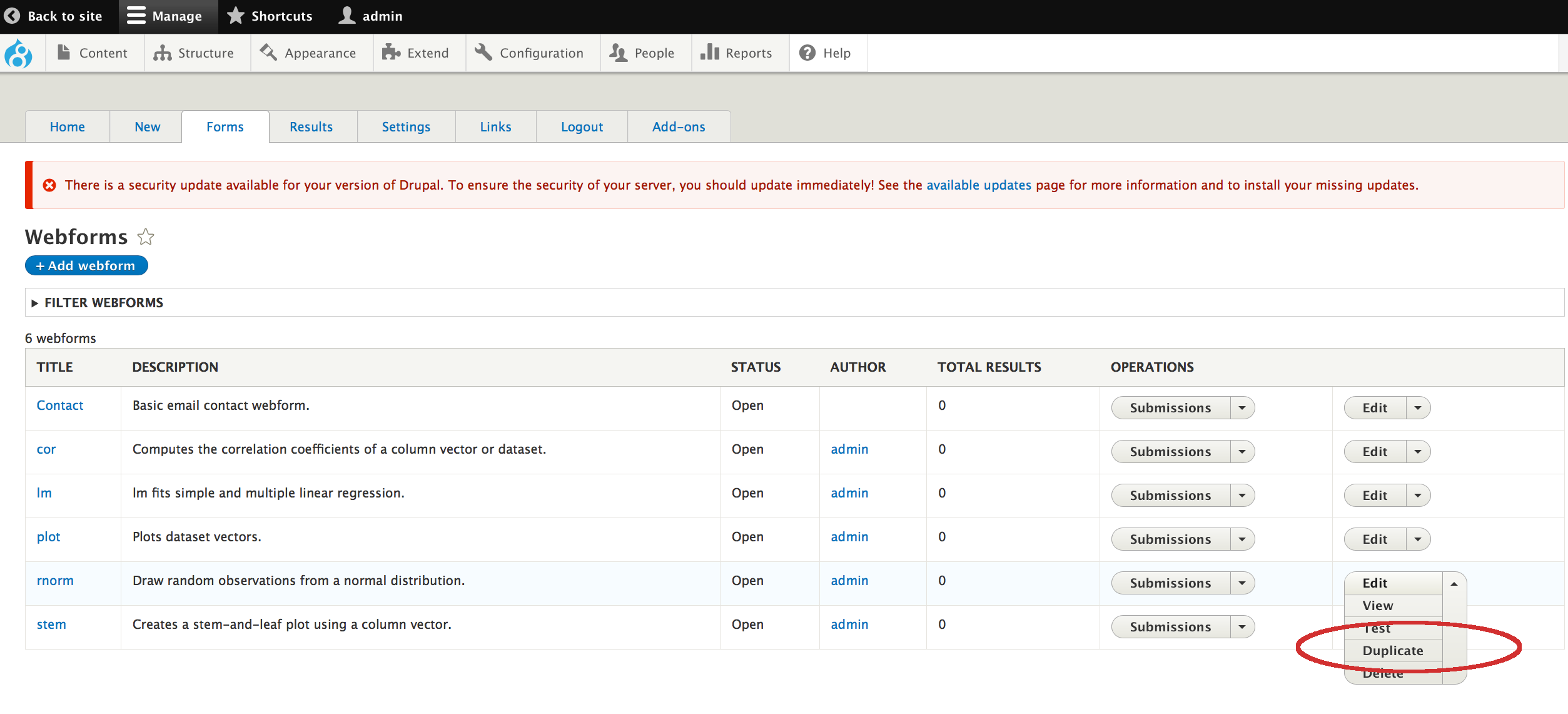Datasets
Building a dataset repository is generally possible it would wise to use ready made solutions.
DKAN2
An Open Data Catalog built on Drupal 8
Features
- Harvesting of data from external catalogs that provide a data.json
- Dataset metadata and resources
- Web service API endpoints that allow third party applications to work with the datasets
- Integration with a decoupled REACT front end
- A datastore to store CSV files and make them queryable through an SQL endpoint.
Upload data and metadata: Use APIs or our metadata entry user interface to add datasets or resources to your platform. Our entry options not only make it easy to add datasets to the platform, they also validate your submissions against the Project Open Data metadata schema, ensuring standards-compliance from the very start. Changing or replacing the schema is already an option for developers who want to get their hands dirty. We plan to support other common standards out-of-the-box in the near future, and eventually, any standard you’d like. Harvesting: Bring data from other online sources to appear seamlessly in your own portal, and keep them up to date with the source material with nightly updates. The new system can currently harvest any source that offers a data.json endpoint, with more kinds of harvesting coming soon. We’ve also engineered our harvest feature to easily migrate your existing data into the platform at the very start. Search: Users can search by keyword and topic (with more options coming soon) using a beautiful, intuitive interface, and they can preview that data to make sure it’s exactly what they need to change the world.
Quadstat
Quadstat with Slickgrid is a Drupal-based statistical web application framework and a basic dataset repository. Site administrators can create apps that interact with user-imported datasets using R statistical software. Because the content management system is Drupal, Quadstat gets all the features and security of Drupal core and also thousands of contributed modules.

Quadstat is a Drupal-based statistical web application framework. Site administrators can create apps that interact with user-imported datasets using R.
The Picostat website was built with Quadstat. The site has added a number of additional features for commercial use.
NOTE: Quadstat is only available as an Amazon Machine Image (AMI) on AWS.
For more information Quadstat Documentation
Socrata
Socrata provides their own out-of-the-box data visualizations, but integration with Drupal gives you much more flexibility and extensibility. Using Socrata’s data within your Drupal site allows you to customize the way you’re using that data to tell your story, inform your audiences, and ultimately influence action. The Socrata Drupal project is a way to access all of the data provided by Socrata using familiar Drupal site building tools.
This isn’t the Drupal side but a place to fetch and present your datasets data.
Using Views — Drupal’s query and list-building tool, which has been moved into core with Drupal 8 — you can easily query the Socrata API as a “data source,” so that your Socrata dataset can be seamlessly integrated into your Drupal site. The data source from Socrata can be the standard SODA2 API (think “show me all of the data in the City of Seattle building permits data set”) or the Catalog Search API (think “show me all of the datasets from the City of Seattle”). You can query and display the data with all the options that you’re accustomed to: selected fields from the dataset, filters and sorting, aggregation, output formatting, and all the standard options provided by Views.
And if you just want to add a default Socrata visualization inline with other content on your site, the Drupal project also provides a convenient way for you to add a Socrata dataset widget to any textarea. Simply copy and paste a “shortcode” for the dataset you’ve created into your content. Combined with other Drupal modules and site building, you might display aggregated statistics, charts, graphs, maps, or simple lists of data from Socrata — all with the look and feel of the rest of your Drupal site. And of course, the relevant Socrata configuration is exportable so it can be tracked in your project’s code repository and deployed with confidence.
For more informatio see Adding Socrata to Your Drupal Game Plan